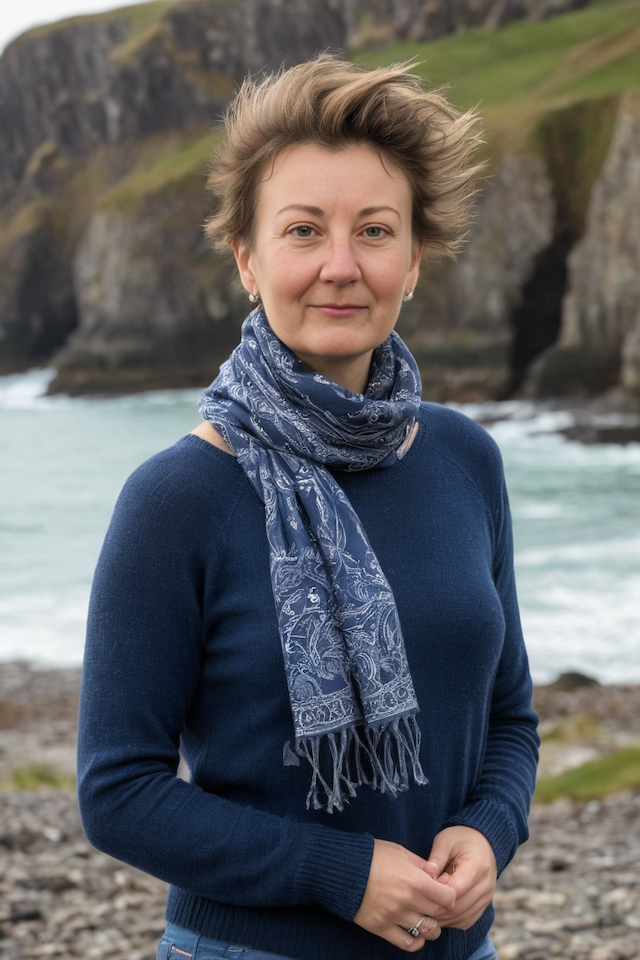Why I Ditched SEO for GEO (And the Lessons That Changed Everything)
Let me tell you about the moment I realised I needed to completely overhaul how I help women-owned businesses get found online. It wasn’t a gradual awakening – it was a proper slap-in-the-face moment that changed the entire direction of my business – and I had to make huge changes in how I operate and the services I offer.
Call it “interior design” for my business if you will!
I was on a Tuesday morning call with Jennifer, an interior designer who’d been working with me for six months on traditional SEO. Her website was gorgeous, her blog posts were well-written, and technically speaking, everything was “optimised” according to every SEO rule I’d learned over fifteen years in this industry.
But Jennifer was frustrated as hell. “I’m not getting the clients I used to get,” she said. “People tell me they’re looking for interior designers, but somehow they’re not finding me anymore. What am I doing wrong?”
That question hit me like a brick because Jennifer wasn’t doing anything wrong. The problem was that I was still helping her optimise for the way people used to search for businesses – typing keywords into Google and scrolling through results like it was 2015.
But that’s not how her potential clients were finding services anymore. They were asking Siri for recommendations whilst juggling school runs. They were trusting AI suggestions from ChatGPT. They were getting instant answers from Google’s AI overviews. And my traditional SEO strategies weren’t helping Jennifer show up anywhere in this new landscape.
Around 80% of voice searches are predicted to be conversational by 2024, and 76% of voice searches are for “near me” and local searches. That’s when I realised I had a choice to make: keep doing what I’d always done and watch my clients struggle, or learn how to help businesses succeed in the way people actually search today.
Why I Made the Switch from SEO to GEO
After that call with Jennifer, I spent weeks researching how search was genuinely changing. What I discovered was both eye-opening and a bit overwhelming.
The women I work with – busy entrepreneurs juggling everything from client calls to school pickups – weren’t sitting at computers typing careful keyword searches anymore. 56% of smartphone users rely on voice search to find information about brands and businesses, and they were asking their phones for quick recommendations whilst driving between endless appointments and commitments. They were trusting AI to give them instant answers whilst making dinner with one hand and checking emails with the other.
Traditional SEO was built for the old way of searching – ranking for specific keywords that people typed into search boxes. But GEO is about being the business that AI systems recommend when people ask conversational questions like “Who’s the best interior designer near me?” instead of typing “interior designer London.”
Looking ahead to 2025, the trends are even more dramatic. Gen Z types questions that have an average of 5.83 words and uses complete sentences, more so than other generations, and voice queries are longer, more conversational, and question-based, meaning long-tail, question-based queries are now the norm. By 2025, conversational AI will enable seamless and real-time translation in multilingual discussions, making the shift to conversational search even more critical for businesses wanting to reach global audiences.
I realised that my clients didn’t need better keyword rankings. They needed to be the answer when their ideal customers asked AI systems for recommendations. They needed to show up in voice search results and be featured in AI overviews when people searched for their services.
So I made the switch. I dedicated months to learning GEO strategies specifically for women-owned businesses, and the results have been incredible.
What I Learned Doesn’t Work Anymore
Making this transition taught me some uncomfortable truths about why so many women entrepreneurs were struggling with their online visibility, even when they thought they were doing everything right.
The biggest shock was discovering that beautiful, keyword-optimised websites often weren’t being seen by AI systems at all. I had clients with gorgeous websites that ranked well in traditional search results, but when potential customers asked AI for recommendations, these businesses were completely invisible.
Traditional SEO tactics like cramming keywords into content actually hurt businesses in the AI world. AI systems are incredibly sophisticated about detecting unnatural language, and they prioritise businesses that communicate clearly and conversationally – the way real people actually talk.
I also learned that the blog content strategies I’d been recommending weren’t working anymore. Long, keyword-heavy blog posts designed to rank for multiple search terms were being ignored by AI systems that preferred concise, helpful content that directly answered specific questions.

Even more surprising, some of the technical SEO elements I’d spent hours perfecting weren’t moving the needle for my clients’ actual business goals. Meanwhile, simple things like consistent business information across all online platforms – something many businesses overlooked (guilty hand-raising here too!) – became absolutely critical for AI discovery.
The Biggest Surprises in My Transition
The most shocking discovery was how differently AI systems evaluate businesses compared to traditional search engines. I found that businesses with lower traditional SEO scores were often getting better AI recommendations than businesses with perfect SEO metrics.
For example, Maria owns a wellness spa that never ranked on the first page of Google for competitive wellness terms. But after I helped her optimise for GEO, she became the top AI recommendation for wellness services in her area. Her bookings increased by 120% because AI systems understood that she provided exactly what local customers were looking for, even though her traditional SEO wasn’t stellar.
Another surprise was how much more personal and relationship-focused GEO strategies needed to be. Traditional SEO was often about competing for broad keywords against big companies. But GEO is about being recommended because AI systems understand you’re the perfect fit for someone’s specific needs.
I also discovered that customer reviews became dramatically more important – not just for social proof, but as information sources that AI systems use to understand and categorise businesses. The way customers describe your services in reviews directly influences how AI systems recommend your business to others.
Real Results for Real Women-Owned Businesses
The results my clients started seeing after I shifted to GEO strategies were beyond what I’d ever achieved with traditional SEO alone.
Sarah runs a financial planning practice specifically for women. Before GEO, she was getting maybe two new client enquiries per month from her website, despite ranking well for several financial planning keywords. After implementing GEO strategies, she started getting 6-8 qualified enquiries monthly – and these weren’t just website visitors, they were people ready to book consultations because AI had recommended her as the perfect fit for their needs.
Lisa owns a boutique marketing agency serving women entrepreneurs. Traditional SEO had helped her website look professional, but it wasn’t connecting her with ideal clients. Within two months of focusing on GEO, her consultation bookings increased by 85%. More importantly, the clients finding her through AI recommendations were exactly the right fit – women business owners who valued her specialised expertise.
Jennifer, the interior designer I mentioned earlier, saw the most dramatic transformation. Once we optimised her online presence for voice search and AI recommendations, she started getting calls from people who would say things like, “My phone told me you’re exactly the designer I’m looking for” (can we just consider for a moment that your phone is telling you stuff and we’re now living in a world where our BFF is our phone! 😂). Her project bookings doubled within six months.
What excited me most was that these weren’t just traffic increases – they were business transformations. My clients were connecting with customers who were genuinely ready to work with them, not just browsing for information.
Mistakes I Made (So You Don’t Have To)
This transition wasn’t smooth sailing, and I made some costly mistakes that taught me valuable lessons about what women-owned businesses really need.
My biggest mistake was initially trying to combine traditional SEO with GEO strategies without understanding how fundamentally different they really are. I spent weeks optimising content for keywords that AI systems completely ignored whilst missing the conversational language patterns that actually matter for AI recommendations.
I also underestimated how quickly the GEO landscape changes – luckily for me, I love this “finding the needle in the haystack” way of working! Traditional SEO strategies could work for months or even years, but GEO requires constant attention and quick adjustments. I learned this lesson when a client’s AI visibility dropped overnight due to changes I hadn’t monitored closely enough.
Another major mistake was not explaining to clients early enough how different GEO success looks compared to traditional SEO metrics. Clients were confused when their keyword rankings stayed the same whilst their actual business results dramatically improved. I learned to focus conversations on business outcomes – more qualified leads, better client matches, increased bookings – rather than technical metrics.
I also made the mistake of assuming that existing website content could be easily adapted for AI optimisation. The most successful GEO content I created was written specifically to answer the questions potential customers ask AI systems, not repurposed from traditional SEO content.
What This Means for Your Business
If you’re a woman business owner who’s been frustrated with your online visibility despite having a professional website and following SEO advice, you’re absolutely not alone. The way customers find businesses has fundamentally changed, and traditional SEO strategies aren’t enough anymore.
Your ideal customers aren’t typing keywords into Google and scrolling through pages of results. They’re asking their phones for recommendations whilst multitasking between client work and family responsibilities. They’re trusting AI to give them personalised suggestions. They’re expecting technology to understand their specific needs and connect them with the perfect solution – which could be your business.
GEO isn’t about abandoning everything you’ve done with your website and online presence. It’s about optimising how AI systems understand and recommend your business. It’s about being conversational instead of keyword-focused. It’s about showing up when people ask for exactly what you offer.
The businesses that adapt to this new reality are seeing incredible results. They’re connecting with ideal customers who are ready to buy, not just browsing. They’re being recommended by AI systems that understand their unique value proposition. They’re growing their businesses through authentic connections rather than competing for generic search terms.
Ready to Make the Switch?
My journey from traditional SEO to GEO wasn’t just about learning new techniques because it was about better serving the women entrepreneurs I’m passionate about helping. Traditional SEO was holding my clients back from connecting with customers who were actively looking for their services but searching in new ways.
If you’ve been struggling to get found online despite having a professional website, if you feel like your ideal customers should be finding you but somehow aren’t, or if you’re curious about how AI and voice search could help your business grow, it might be time to explore what GEO can do for you.
Ready to see where your website stands in this new AI-powered world? Download my complete 50-point GEO audit checklist and discover exactly what needs fixing to get your business found by AI systems and voice search.
The future of online visibility isn’t about competing for keyword rankings. It’s about being the business that AI systems confidently recommend when someone asks for exactly what you offer. It’s about connecting with customers who are ready to work with someone like you, and not just anyone in your industry.
The women entrepreneurs who embrace this shift early are already seeing the benefits. Will you be one of them?








